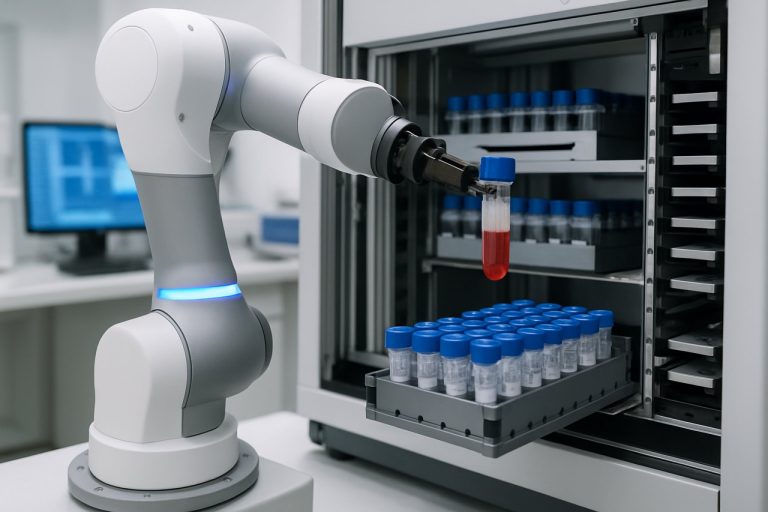
Big Data Genomics Integration Platforms Market Report 2025: In-Depth Analysis of AI-Enabled Data Integration, Market Dynamics, and Strategic Opportunities for the Next 5 Years
- Executive Summary & Market Overview
- Key Technology Trends in Genomics Data Integration
- Competitive Landscape and Leading Players
- Market Growth Forecasts (2025–2030): CAGR, Revenue, and Volume Analysis
- Regional Market Analysis: North America, Europe, Asia-Pacific, and Rest of World
- Challenges and Opportunities in Big Data Genomics Integration
- Future Outlook: Emerging Applications and Strategic Recommendations
- Sources & References
Executive Summary & Market Overview
Big Data Genomics Integration Platforms represent a rapidly evolving segment at the intersection of genomics, bioinformatics, and advanced data analytics. These platforms are designed to aggregate, process, and analyze vast and complex genomic datasets, enabling researchers, clinicians, and pharmaceutical companies to derive actionable insights for precision medicine, drug discovery, and population health management. The integration of big data technologies—such as distributed computing, cloud storage, and machine learning—has become essential to manage the exponential growth of genomic data generated by next-generation sequencing (NGS) and other high-throughput technologies.
In 2025, the global market for Big Data Genomics Integration Platforms is projected to continue its robust expansion, driven by increasing adoption of genomics in clinical settings, the proliferation of large-scale population genomics initiatives, and the growing need for interoperable, scalable data solutions. According to Grand View Research, the broader genomics market is expected to reach over $94 billion by 2028, with data integration and analytics platforms constituting a significant and growing share. The demand is further fueled by the integration of multi-omics data (genomics, transcriptomics, proteomics, etc.), which requires sophisticated platforms capable of harmonizing disparate data types and formats.
Key industry players—including Illumina, Thermo Fisher Scientific, SAP, and IBM—are investing heavily in cloud-based genomics data platforms, artificial intelligence (AI)-driven analytics, and secure data sharing frameworks. Strategic collaborations between technology providers and healthcare organizations are accelerating the development of end-to-end solutions that address challenges related to data privacy, standardization, and real-time analytics.
- North America remains the largest market, supported by substantial R&D investments, favorable regulatory frameworks, and the presence of leading genomics research centers.
- Asia-Pacific is witnessing the fastest growth, propelled by government-backed genomics initiatives in China, Japan, and India, and increasing adoption of precision medicine.
- Key challenges include data interoperability, cybersecurity risks, and the need for skilled bioinformatics professionals.
Overall, Big Data Genomics Integration Platforms are poised to play a pivotal role in the future of healthcare and life sciences, enabling more personalized, data-driven approaches to disease prevention, diagnosis, and treatment as the market matures through 2025 and beyond.
Key Technology Trends in Genomics Data Integration
The integration of big data technologies into genomics is rapidly transforming the landscape of biomedical research and precision medicine. In 2025, big data genomics integration platforms are at the forefront of this evolution, enabling the aggregation, harmonization, and analysis of vast and heterogeneous genomic datasets alongside clinical, phenotypic, and real-world data. These platforms are designed to address the challenges of data volume, variety, and velocity inherent in genomics, providing scalable, secure, and interoperable solutions for researchers and healthcare providers.
A key trend is the adoption of cloud-native architectures, which allow for elastic compute and storage resources, facilitating the management of petabyte-scale genomic datasets. Leading cloud service providers, such as Google Cloud Healthcare and Amazon Web Services Genomics, offer specialized genomics data integration and analytics services. These platforms support standardized data formats (e.g., FASTQ, BAM, VCF) and interoperability frameworks such as HL7 FHIR, enabling seamless data exchange and collaborative research across institutions.
Another significant trend is the integration of artificial intelligence (AI) and machine learning (ML) capabilities within these platforms. AI-driven tools are increasingly used for automated variant calling, annotation, and interpretation, as well as for identifying novel biomarkers and therapeutic targets. Platforms like Illumina DRAGEN Bio-IT Platform and DNAnexus are incorporating advanced analytics pipelines that leverage AI/ML to accelerate genomic discovery and clinical decision-making.
Interoperability and data federation are also gaining traction, with platforms enabling secure, federated queries across distributed datasets without the need for data centralization. Initiatives such as the Global Alliance for Genomics and Health (GA4GH) are driving the adoption of open standards and APIs, fostering a more connected and collaborative genomics ecosystem.
Finally, regulatory compliance and data privacy remain central to platform development. Solutions are increasingly incorporating robust access controls, audit trails, and encryption to meet the requirements of regulations such as GDPR and HIPAA, ensuring that sensitive genomic data is protected throughout its lifecycle.
As the volume and complexity of genomics data continue to grow, the evolution of big data genomics integration platforms will be critical in unlocking the full potential of precision medicine and large-scale population genomics initiatives.
Competitive Landscape and Leading Players
The competitive landscape for Big Data Genomics Integration Platforms in 2025 is characterized by rapid innovation, strategic partnerships, and a growing emphasis on interoperability and scalability. The market is dominated by a mix of established technology giants, specialized genomics software providers, and emerging startups, all vying to address the increasing demand for platforms that can efficiently integrate, analyze, and interpret vast genomic datasets alongside clinical and phenotypic information.
Key players in this space include Illumina, whose BaseSpace Sequence Hub continues to expand its cloud-based analytics and integration capabilities, and Thermo Fisher Scientific, which leverages its Ion Torrent platform and Connected Science ecosystem to facilitate seamless data flow from sequencing to interpretation. SAP and Google Cloud are also prominent, offering robust data warehousing, AI-driven analytics, and secure data sharing frameworks tailored for genomics research and clinical applications.
Emerging players such as DNAnexus and Seven Bridges Genomics are gaining traction by providing highly customizable, cloud-native platforms that support multi-omics data integration, workflow automation, and compliance with global data privacy standards. These companies are increasingly forming alliances with pharmaceutical firms and research consortia to accelerate drug discovery and precision medicine initiatives.
The competitive dynamics are further shaped by the entry of healthcare IT vendors like IBM Watson Health and Oracle Health, which are leveraging their expertise in big data management and artificial intelligence to offer end-to-end genomics data solutions. Additionally, open-source initiatives and consortia, such as the Global Alliance for Genomics and Health (GA4GH), are fostering interoperability standards and collaborative frameworks, influencing platform development and vendor strategies.
- Market leaders are investing heavily in AI/ML integration, real-time analytics, and secure data sharing to differentiate their offerings.
- Strategic partnerships between platform providers, sequencing technology companies, and healthcare organizations are accelerating innovation and market penetration.
- Regulatory compliance, particularly with GDPR and HIPAA, remains a critical differentiator, with vendors emphasizing robust security and data governance features.
Overall, the 2025 landscape is marked by consolidation, technological convergence, and a focus on enabling large-scale, collaborative genomics research and clinical translation through advanced integration platforms.
Market Growth Forecasts (2025–2030): CAGR, Revenue, and Volume Analysis
The market for Big Data Genomics Integration Platforms is poised for robust expansion between 2025 and 2030, driven by the convergence of genomics research, precision medicine, and advanced data analytics. According to projections from MarketsandMarkets, the global genomics market is expected to reach over $94 billion by 2028, with integration platforms playing a pivotal role in managing and analyzing the exponentially growing volume of genomic data. The segment specifically focused on big data integration is forecasted to achieve a compound annual growth rate (CAGR) of approximately 17–20% during the 2025–2030 period, outpacing the broader genomics market due to the increasing demand for scalable, interoperable, and AI-driven solutions.
Revenue analysis indicates that the Big Data Genomics Integration Platforms market will surpass $5.5 billion by 2025, with projections suggesting it could exceed $12 billion by 2030. This growth is underpinned by the adoption of cloud-based platforms, the proliferation of multi-omics datasets, and the need for real-time analytics in clinical and research settings. Key industry players such as Illumina, Thermo Fisher Scientific, and SAP are investing heavily in platform development, further accelerating market expansion.
- CAGR (2025–2030): Estimated at 17–20%, reflecting rapid technological advancements and increased adoption across healthcare and research institutions.
- Revenue Projections: Market size expected to grow from $5.5 billion in 2025 to over $12 billion by 2030.
- Volume Analysis: The volume of genomic datasets processed through integration platforms is anticipated to double every 18–24 months, in line with trends reported by International Data Corporation (IDC) and Gartner, as sequencing costs decline and data generation accelerates.
Regionally, North America will continue to dominate market share, but Asia-Pacific is projected to exhibit the fastest growth, fueled by government genomics initiatives and expanding healthcare infrastructure. The integration of AI and machine learning into these platforms is expected to further boost adoption rates, enabling more sophisticated data harmonization and actionable insights. Overall, the 2025–2030 period will be characterized by rapid scaling, increased interoperability, and a shift toward real-time, cloud-native genomics data integration solutions.
Regional Market Analysis: North America, Europe, Asia-Pacific, and Rest of World
The global market for Big Data Genomics Integration Platforms is experiencing robust growth, with regional dynamics shaped by healthcare infrastructure, regulatory environments, and investment in precision medicine. In 2025, North America, Europe, Asia-Pacific, and the Rest of the World (RoW) each present distinct opportunities and challenges for platform adoption and expansion.
- North America: North America remains the largest market, driven by advanced healthcare systems, significant R&D investments, and a high concentration of genomics research institutions. The United States, in particular, benefits from initiatives such as the All of Us Research Program and strong funding from the National Institutes of Health. The presence of leading platform providers and collaborations between academic, clinical, and commercial entities further accelerate adoption. Data privacy regulations, such as HIPAA, shape platform design and interoperability.
- Europe: Europe is characterized by a collaborative approach to genomics, with cross-border projects like the ELIXIR infrastructure and the Genomics England initiative. The region’s focus on data harmonization and ethical standards, underpinned by the General Data Protection Regulation (GDPR), drives demand for secure, compliant integration platforms. The market is fragmented, with strong activity in the UK, Germany, and the Nordics, and increasing investment in digital health transformation.
- Asia-Pacific: The Asia-Pacific region is witnessing the fastest growth, propelled by expanding genomics research, government-backed precision medicine programs, and rising healthcare IT adoption. Countries like China, Japan, and South Korea are investing heavily in genomics infrastructure, with China’s BGI Group and Japan’s RIKEN leading large-scale sequencing projects. However, data standardization and interoperability remain challenges, and regulatory frameworks are evolving to address privacy and cross-border data sharing.
- Rest of World (RoW): In regions such as Latin America, the Middle East, and Africa, adoption is nascent but growing, supported by international collaborations and pilot projects. Limited infrastructure and funding are barriers, but initiatives from organizations like the World Health Organization and regional genomics consortia are fostering capacity building and technology transfer.
Overall, while North America and Europe lead in platform maturity and regulatory clarity, Asia-Pacific is emerging as a high-growth market, and RoW regions are gradually integrating big data genomics solutions through targeted investments and partnerships.
Challenges and Opportunities in Big Data Genomics Integration
The integration of big data in genomics is revolutionizing biomedical research and personalized medicine, but it also presents a complex landscape of challenges and opportunities for platform providers in 2025. Big data genomics integration platforms are specialized software and infrastructure solutions designed to aggregate, process, and analyze vast, heterogeneous genomic datasets alongside clinical and phenotypic information. These platforms are pivotal in enabling researchers and clinicians to derive actionable insights from multi-omic data, but their development and adoption are shaped by several key factors.
One of the primary challenges is data interoperability. Genomic data is generated in diverse formats across sequencing technologies and research institutions, making standardization a persistent hurdle. Leading initiatives, such as the Global Alliance for Genomics and Health, are working to establish common data models and APIs, but widespread adoption remains uneven. This fragmentation complicates data sharing and integration, slowing the pace of discovery and clinical translation.
Data security and privacy are also critical concerns. Genomic information is highly sensitive, and compliance with regulations such as the GDPR and HIPAA is mandatory for platform providers. In 2025, platforms are increasingly adopting advanced encryption, federated learning, and privacy-preserving computation techniques to address these risks, as highlighted by IBM Watson Health and other industry leaders.
Scalability and computational efficiency represent another set of challenges. The volume of genomic data is projected to exceed that of astronomy and social media combined, with estimates suggesting that genomics could generate up to 40 exabytes of data annually by 2025 (Nature Scientific Data). Integration platforms must leverage cloud-native architectures, distributed computing, and AI-driven analytics to manage this scale, as demonstrated by solutions from Google Cloud Healthcare and AWS Genomics.
Despite these challenges, significant opportunities are emerging. The convergence of AI and big data genomics is enabling more precise biomarker discovery, drug development, and risk prediction models. The growing adoption of open-source frameworks and collaborative data ecosystems, such as DNAnexus and Terra, is fostering innovation and reducing barriers to entry for smaller research groups. As healthcare systems increasingly prioritize precision medicine, demand for robust, interoperable, and secure genomics integration platforms is expected to accelerate, driving market growth and technological advancement in 2025 and beyond.
Future Outlook: Emerging Applications and Strategic Recommendations
The future outlook for Big Data Genomics Integration Platforms in 2025 is shaped by rapid advancements in both genomics and data analytics, with emerging applications poised to transform healthcare, research, and pharmaceutical development. As sequencing costs continue to decline and the volume of genomic data grows exponentially, integration platforms are becoming essential for managing, analyzing, and deriving actionable insights from complex datasets.
Emerging applications are expected to focus on precision medicine, where integrated platforms enable the correlation of genomic, clinical, and lifestyle data to tailor treatments for individual patients. This is particularly relevant in oncology, rare disease diagnosis, and pharmacogenomics, where real-time data integration can accelerate the identification of biomarkers and therapeutic targets. Additionally, population-scale genomics initiatives, such as those led by National Institutes of Health (NIH) and Genomics England, are driving demand for scalable platforms capable of handling petabyte-scale datasets while ensuring data privacy and compliance.
Strategically, platform providers are expected to prioritize interoperability, cloud-native architectures, and AI-driven analytics. The adoption of open standards, such as those promoted by the Global Alliance for Genomics and Health (GA4GH), will be critical for enabling seamless data exchange across institutions and geographies. Furthermore, partnerships between technology firms and healthcare organizations are likely to intensify, as seen in collaborations between Google Cloud and leading research hospitals, to co-develop secure, scalable solutions.
- AI and Machine Learning Integration: The integration of advanced AI and machine learning algorithms will enhance predictive analytics, variant interpretation, and automated data curation, reducing time-to-insight for clinicians and researchers.
- Real-Time Data Processing: Platforms will increasingly support real-time or near-real-time data ingestion and analysis, enabling dynamic clinical decision support and adaptive trial designs in drug development.
- Data Security and Compliance: With growing regulatory scrutiny, robust data governance frameworks and end-to-end encryption will be non-negotiable features for platform adoption, especially in cross-border data sharing scenarios.
In summary, the 2025 landscape for Big Data Genomics Integration Platforms will be defined by their ability to support emerging applications in precision medicine and large-scale research, underpinned by strategic investments in interoperability, AI, and data security. Stakeholders should focus on building flexible, standards-based ecosystems and forging cross-sector partnerships to capture the full value of integrated genomic data.
Sources & References
- Grand View Research
- Illumina
- Thermo Fisher Scientific
- IBM
- Google Cloud Healthcare
- Amazon Web Services Genomics
- DNAnexus
- Global Alliance for Genomics and Health (GA4GH)
- Seven Bridges Genomics
- Oracle Health
- MarketsandMarkets
- International Data Corporation (IDC)
- National Institutes of Health
- ELIXIR
- Genomics England
- BGI Group
- RIKEN
- World Health Organization
- Nature Scientific Data
- Terra



